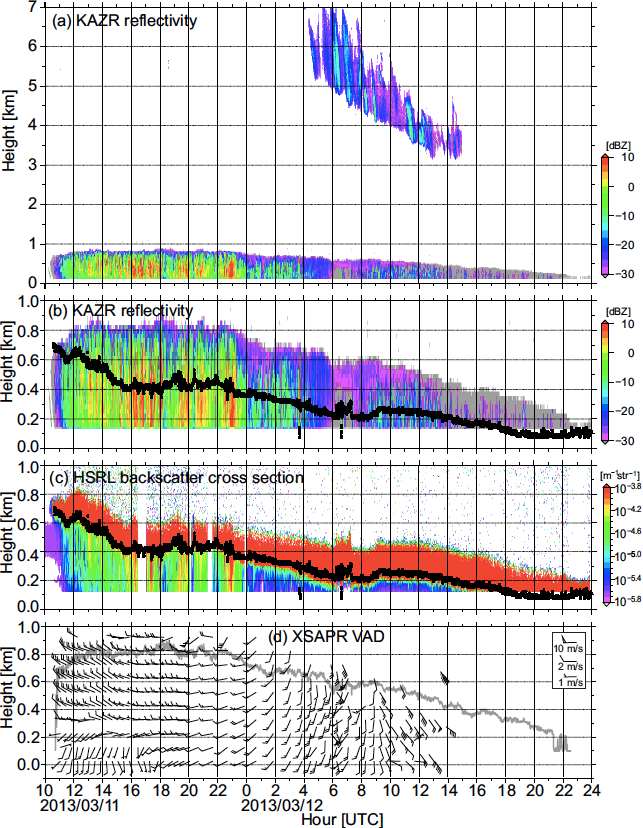Understanding changes in cloud phase partitioning in mixed-phase clouds: An Arctic case study
Submitter:
Kalesse-Los, Heike — Leipzig University
Area of research:
Cloud Processes
Journal Reference:
Science
“A low cloud of water and ice – in Barrow, Alaska, how nice.
Its structure was measured with ease – but why did the ice phase decrease?”
For a springtime low-level mixed-phase stratiform cloud case from Barrow, Alaska, a unique combination of instruments and retrieval methods is combined with multiple modeling perspectives to determine key processes that control cloud phase partitioning.
Impact
Thanks to the combined expertise of the ARM cloud phase group, the cloud was examined from multiple observational and modeling perspectives and the interplay of local cloud-scale versus large-scale processes and their role in cloud-phase partitioning was analyzed. Fruitful discussions on case study selection, hypotheses on why cloud phase changed rapidly during the observation period, and cloud radar calibration issues as well as the interplay of different processes took place during ARM/ASR user facility and PI science team meetings within the last two years. This study is thus a common effort of ARM cloud phase group and can serve as a model for future activities in ARM/ASR working group studies.
Summary
This study is on a persistent stratiform mixed-phase cloud observed at the NSA site in Barrow, Alaska on 11-12 March, 2013. This case is of particular interest because, during the 37-hour duration of the cloud, substantial temporal variability in the liquid-cloud layer and associated ice precipitation was observed. Major influences were the large-scale advection of different airmasses with different aerosol concentrations and humidity content; cloud-scale processes such as a change in the thermodynamical coupling state; and local-scale dynamics influencing the residence time of ice particles. Other factors such as radiative shielding by a cirrus and the influence of the solar cycle were found to play only a minor role for the specific case study. For an even better understanding of cloud phase transitions, observations of key aerosol parameters such as profiles of cloud condensation nucleus and ice nucleus concentration are desirable.


